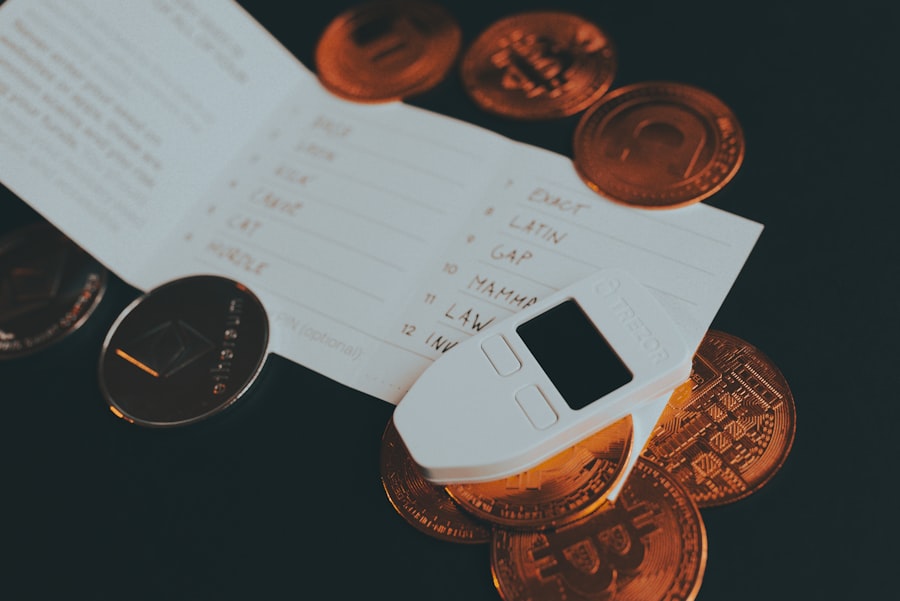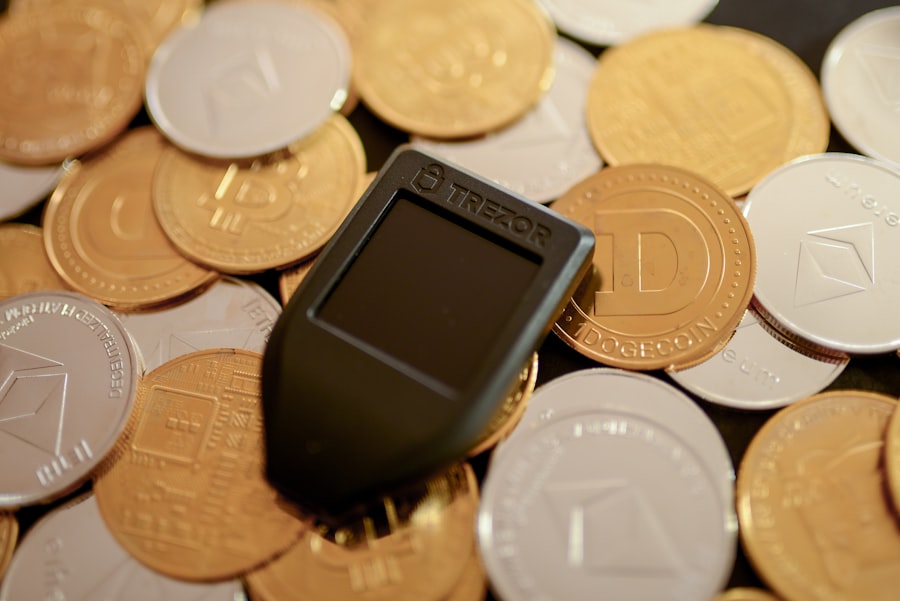In the ever-evolving landscape of digital finance, cryptocurrency wallets serve as essential tools for managing our digital assets. At their core, these wallets are software programs or physical devices that allow us to store, send, and receive cryptocurrencies like Bitcoin, Ethereum, and many others. Unlike traditional wallets that hold physical cash, cryptocurrency wallets do not store the actual coins; instead, they hold the cryptographic keys that grant us access to our digital currencies on the blockchain.
This distinction is crucial for understanding how we interact with our assets in the digital realm. As we delve deeper into the world of cryptocurrency wallets, it becomes clear that they play a pivotal role in ensuring the security and accessibility of our investments. Each wallet operates on a unique address, akin to an account number, which we use to conduct transactions.
The private key associated with this address is what allows us to access and manage our funds. Therefore, understanding the mechanics of these wallets is vital for anyone looking to navigate the cryptocurrency market safely and effectively. By grasping how wallets function, we can make informed decisions about how to store and protect our digital assets.
Key Takeaways
- Cryptocurrency wallets are digital tools used to store, send, and receive cryptocurrencies.
- There are different types of cryptocurrency wallets, including hardware wallets, software wallets, and paper wallets.
- When choosing a cryptocurrency wallet, consider factors such as security features, user interface, and compatibility with different cryptocurrencies.
- To secure your cryptocurrency wallet, use strong passwords, enable two-factor authentication, and keep your private keys offline.
- It’s important to regularly back up your cryptocurrency wallet to protect against data loss or theft.
Types of Cryptocurrency Wallets
When it comes to cryptocurrency wallets, we encounter a variety of options, each designed to cater to different needs and preferences. Broadly speaking, we can categorize these wallets into two main types: hot wallets and cold wallets. Hot wallets are connected to the internet and are typically more user-friendly, making them ideal for everyday transactions.
Examples include mobile apps and web-based platforms that allow us to quickly send and receive cryptocurrencies with just a few clicks. However, their constant online presence also makes them more vulnerable to hacking and cyber threats. On the other hand, cold wallets provide a higher level of security by storing our private keys offline.
These can take the form of hardware wallets or paper wallets. Hardware wallets are physical devices that securely store our keys and require us to connect them to a computer or mobile device when we want to make a transaction. Paper wallets involve printing our keys on a piece of paper, which we then keep in a safe place.
While cold wallets may not be as convenient for frequent transactions, they offer peace of mind for long-term investors who prioritize security over accessibility.
Choosing the Right Cryptocurrency Wallet
Selecting the right cryptocurrency wallet is a critical decision that can significantly impact our experience in the digital currency space. As we evaluate our options, we must consider several factors, including security features, ease of use, and compatibility with various cryptocurrencies. For instance, if we plan to invest in multiple cryptocurrencies, we should look for a wallet that supports a wide range of coins and tokens.
This versatility can save us from the hassle of managing multiple wallets for different assets. Additionally, we should assess the wallet’s security measures. Some wallets offer advanced features such as two-factor authentication (2FA), biometric access, and multi-signature capabilities.
These features can enhance our protection against unauthorized access and potential theft. Furthermore, we should also consider the reputation of the wallet provider. Researching user reviews and expert opinions can help us gauge the reliability and trustworthiness of a wallet before making our choice.
Securing Your Cryptocurrency Wallet
| Security Measure | Description |
|---|---|
| Strong Password | Use a combination of letters, numbers, and special characters. |
| Two-Factor Authentication | Enable 2FA to add an extra layer of security to your wallet. |
| Backup Your Wallet | Create a backup of your wallet and store it in a secure location. |
| Update Software | Regularly update your wallet software to protect against vulnerabilities. |
| Secure Your Devices | Use antivirus and firewall protection on your devices. |
Once we have chosen a cryptocurrency wallet, securing it becomes our top priority. The digital nature of cryptocurrencies makes them susceptible to various threats, including hacking attempts and phishing scams. To safeguard our assets, we should implement several best practices.
First and foremost, using strong, unique passwords is essential. We should avoid using easily guessable information and consider employing a password manager to generate and store complex passwords securely. In addition to strong passwords, enabling two-factor authentication (2FA) adds an extra layer of security to our wallet.
This feature requires us to provide a second form of verification—such as a code sent to our mobile device—when logging in or making transactions. By taking these precautions, we can significantly reduce the risk of unauthorized access to our funds. Moreover, staying vigilant against phishing attempts is crucial; we should always verify the authenticity of websites and emails before entering any sensitive information.
Backing Up Your Cryptocurrency Wallet
Backing up our cryptocurrency wallet is another vital step in ensuring the safety of our digital assets. A backup allows us to recover our funds in case of device loss, theft, or software failure. Most wallets provide an option to create a backup by generating a recovery phrase or seed phrase—a series of words that can be used to restore access to our wallet.
It is imperative that we store this recovery phrase securely and never share it with anyone. We should also consider creating multiple backups in different locations to further mitigate risks. For instance, we can write down our recovery phrase on paper and store it in a safe deposit box or another secure location away from our primary residence.
Additionally, some users opt for encrypted digital backups stored on external drives or cloud services with strong encryption protocols. By taking these precautions, we can ensure that our cryptocurrency remains accessible even in unforeseen circumstances.
Best Practices for Using Cryptocurrency Wallets
Stay Up-to-Date with Software Updates
Wallet providers frequently release updates that address security vulnerabilities and improve functionality. By regularly updating our wallet software, we can benefit from these enhancements and protect ourselves from potential threats.
Protect Your Wallet Information
Being cautious about sharing information related to our wallet is crucial. We should refrain from discussing specific details about our holdings or wallet addresses in public forums or social media platforms. This discretion helps prevent unwanted attention from malicious actors who may seek to exploit vulnerabilities in our security measures.
Understand Transaction Fees
Understanding the fees associated with sending cryptocurrencies can help us make more informed decisions about when and how to conduct transactions.
Recovering Lost or Stolen Cryptocurrency
Despite our best efforts at securing our cryptocurrency wallets, there may come a time when we face the unfortunate situation of losing access to our funds or having them stolen. In such cases, knowing how to recover lost or stolen cryptocurrency is crucial. If we lose access due to forgetting our password or losing our device, having a backup recovery phrase becomes invaluable.
By following the recovery process outlined by our wallet provider, we can regain access to our funds. In instances where funds have been stolen through hacking or phishing attacks, recovery becomes more complex. While blockchain technology allows for transparency in transactions, it does not provide a straightforward method for reversing them once they are completed.
However, reporting the theft to relevant authorities and providing them with transaction details may help in tracking down stolen assets. Additionally, some exchanges have policies in place for handling stolen funds; reaching out to them promptly may yield some assistance in recovering lost assets.
Future Developments in Cryptocurrency Wallet Security
As the cryptocurrency landscape continues to evolve, so too does the technology surrounding wallet security.
One promising area is the integration of biometric authentication methods into cryptocurrency wallets.
By utilizing fingerprint recognition or facial recognition technology, we can add an extra layer of security that is both convenient and difficult for unauthorized users to bypass.
As decentralized applications gain traction, we may see wallets that seamlessly integrate with these platforms while ensuring that users retain full ownership of their private keys.
This shift could empower us as users by providing greater autonomy over our financial transactions while minimizing reliance on centralized entities. In conclusion, understanding cryptocurrency wallets is essential for anyone looking to engage with digital currencies effectively and securely. By exploring the various types of wallets available, choosing the right one for our needs, implementing robust security measures, and staying informed about best practices and future developments, we can navigate this exciting financial frontier with confidence and peace of mind.
FAQs
What is a cryptocurrency wallet?
A cryptocurrency wallet is a digital tool that allows users to store, send, and receive various types of cryptocurrencies. It does not actually store the cryptocurrency itself, but rather the keys that allow access to the cryptocurrency on the blockchain.
How does a cryptocurrency wallet work?
A cryptocurrency wallet works by generating and storing public and private keys, which are used to access and manage a user’s cryptocurrency holdings. The public key is used to receive funds, while the private key is used to sign transactions and access the funds.
What are the different types of cryptocurrency wallets?
There are several types of cryptocurrency wallets, including hardware wallets, software wallets, paper wallets, and online wallets. Hardware wallets are physical devices that store the user’s keys offline, while software wallets are digital applications that can be accessed on a computer or mobile device. Paper wallets involve printing out the public and private keys on a piece of paper, while online wallets are web-based services that store the keys on the internet.
Are cryptocurrency wallets secure?
The security of a cryptocurrency wallet depends on the type of wallet and how it is used. Hardware wallets are generally considered the most secure, as they store the keys offline and are not susceptible to hacking. Software and online wallets can be secure if proper security measures are taken, such as using strong passwords and enabling two-factor authentication.
Can I use the same wallet for different cryptocurrencies?
Some wallets support multiple cryptocurrencies, while others are designed for specific cryptocurrencies. It is important to choose a wallet that is compatible with the specific cryptocurrencies you want to store and manage.
What should I consider when choosing a cryptocurrency wallet?
When choosing a cryptocurrency wallet, it is important to consider factors such as security, user-friendliness, compatibility with different cryptocurrencies, and the ability to back up and recover the wallet in case of loss or theft. It is also important to research and choose a reputable and trusted wallet provider.
Get more stuff like this
Subscribe to our mailing list and get interesting stuff and updates to your email inbox.
Thank you for subscribing.
Something went wrong.




